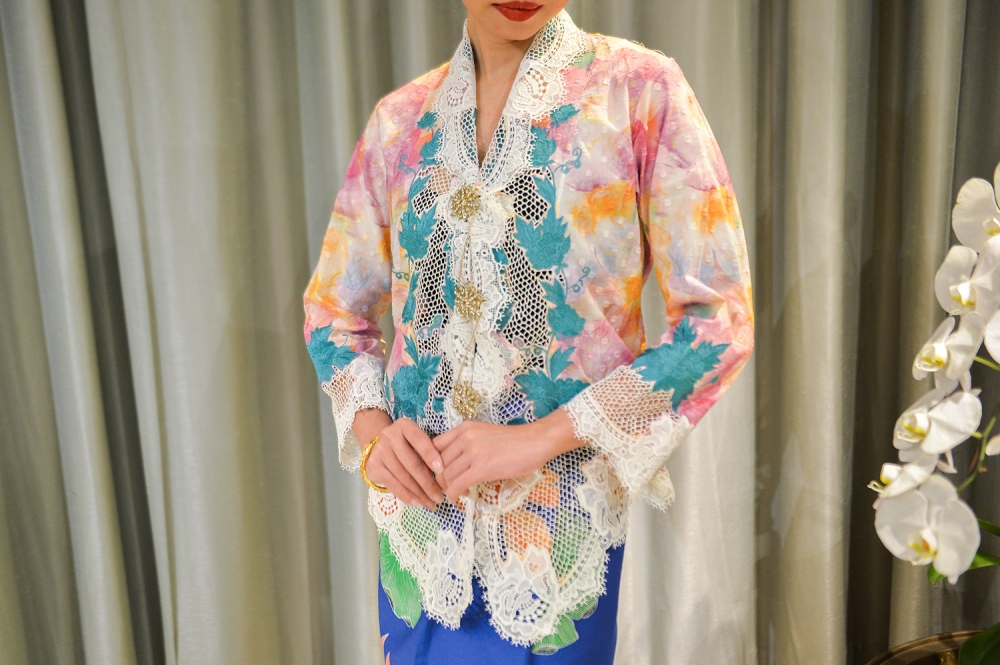KUALA LUMPUR, April 23 — Growing up in Penang in the 1950s and 1960s, Lily Yew said there were kebaya makers everywhere.
“By 1980, there were just a handful,” the 75-year-old Nyonya kebaya entrepreneur told Malay Mail.
Many embroiderers have retired and kebayas sold today are mostly embroidered by Indonesians, she said.
“Indonesian mass production is the affordable trend now but it’s very sad that locals do not want to carry on the tradition.
“I can count on one hand the authentic sulam embroiderers left in Malaysia,” she said, adding that she learnt the technique herself to teach her embroiderers.
Kebaya expert Cedric Tan, 58, agrees that the making of kebayas is a dying art among Malaysians, saying that it was a craft learnt by women.
“Kebaya making is not a real money-making thing now, unless you are very good and fast,” he explained.
In the past, it was done by housewives in their free time so it was not possible to produce many pieces in a short period of time, he said.
“There are very few people who can sew and customise kebayas now,” he said, estimating that there are maybe four or five who can do it, some of them from the same family even.
“There is an urgent need to train young fresh embroiderers who are interested in taking up the embroidering of kebaya,” he added.
Tan, who is involved with the Ministry of Tourism, Arts and Culture’s initiative to nominate “Kebaya: Knowledge, Skills, Traditions and Practices” for the Unesco list alongside Brunei, Indonesia, Singapore and Thailand, emphasised the importance of maintaining the traditional item of clothing for the initiative to succeed.
In a statement earlier this month, the ministry said that the kebaya represents and celebrates a shared historical legacy and is still worn by communities across South-east Asia.
“The kebaya is an item of clothing that symbolises a cultural legacy and the identification of the Malays, Peranakan (Chinese, Baba Nyonya, Chetti, Siamese, Kristang) and other communities in Malaysia as well as countries in South-east Asia.
“The kebaya fulfils the definition of intangible cultural heritage elements as it includes traditional weaving skills such as embroidery and sewing techniques to create this traditional women’s clothing,” it said.
However, Tan is concerned that nobody really wears the Nyonya kebaya anymore as they don’t come cheap.
“I’ve heard of it costing as much as RM4,000 a piece,” he added.
But there are still affordable mass produced kebayas that people can purchase, he added.

Penang Nyonya Cecelia Lim, 68, said designing and embroidering the Nyonya kebaya requires passion, interest and patience.
“It is tedious work and sometimes, the embroidery of one kebaya can take months to complete,” she said.
She said not many people are willing to spend the time to do this.
Over the years, she has taken on a few apprentices who want to learn Nyonya kebaya embroidery but they often give up halfway through.
“I have one apprentice who gave up after a few months of learning,” she said.
Former Muzium Negara curator and textile expert Zubaidah Sual, 70, is not worried that kebaya making is dying out.
“I feel that there is no lack of kebaya tailors,” she said.
Malaysia has not only local tailors, but also those who hail from other countries such as Indonesia and Pakistan, she added.
“The demand for kebayas especially from dance groups and for weddings as well as events is very encouraging,” she said.
However, it is a different story when it comes to embroiderers because of the complexity of producing kebaya embroidery, she said.
“Because of that, many embroidered kebayas are imported from neighbouring countries like Indonesia and southern Thailand as the price is also much cheaper,” she said.



















